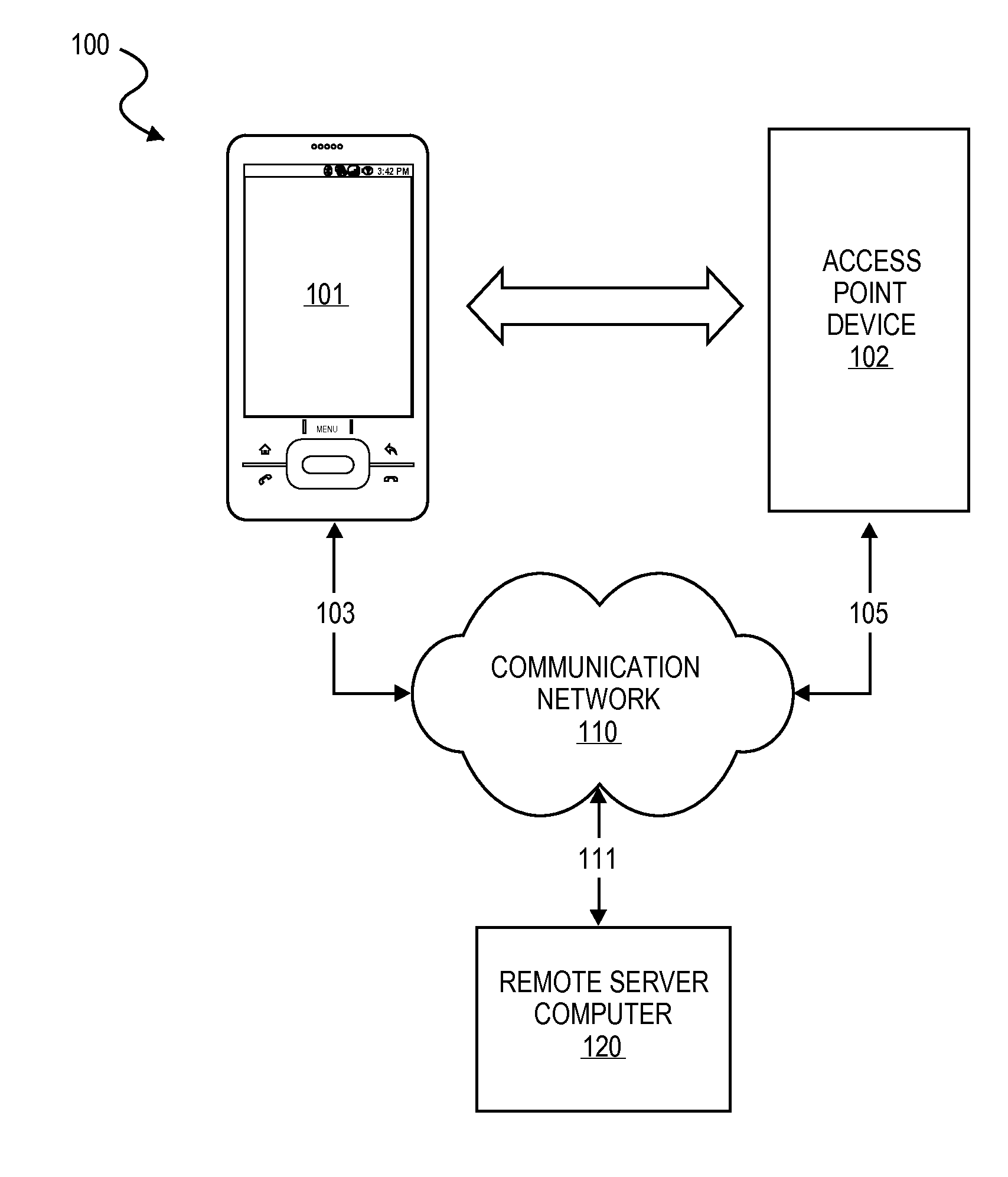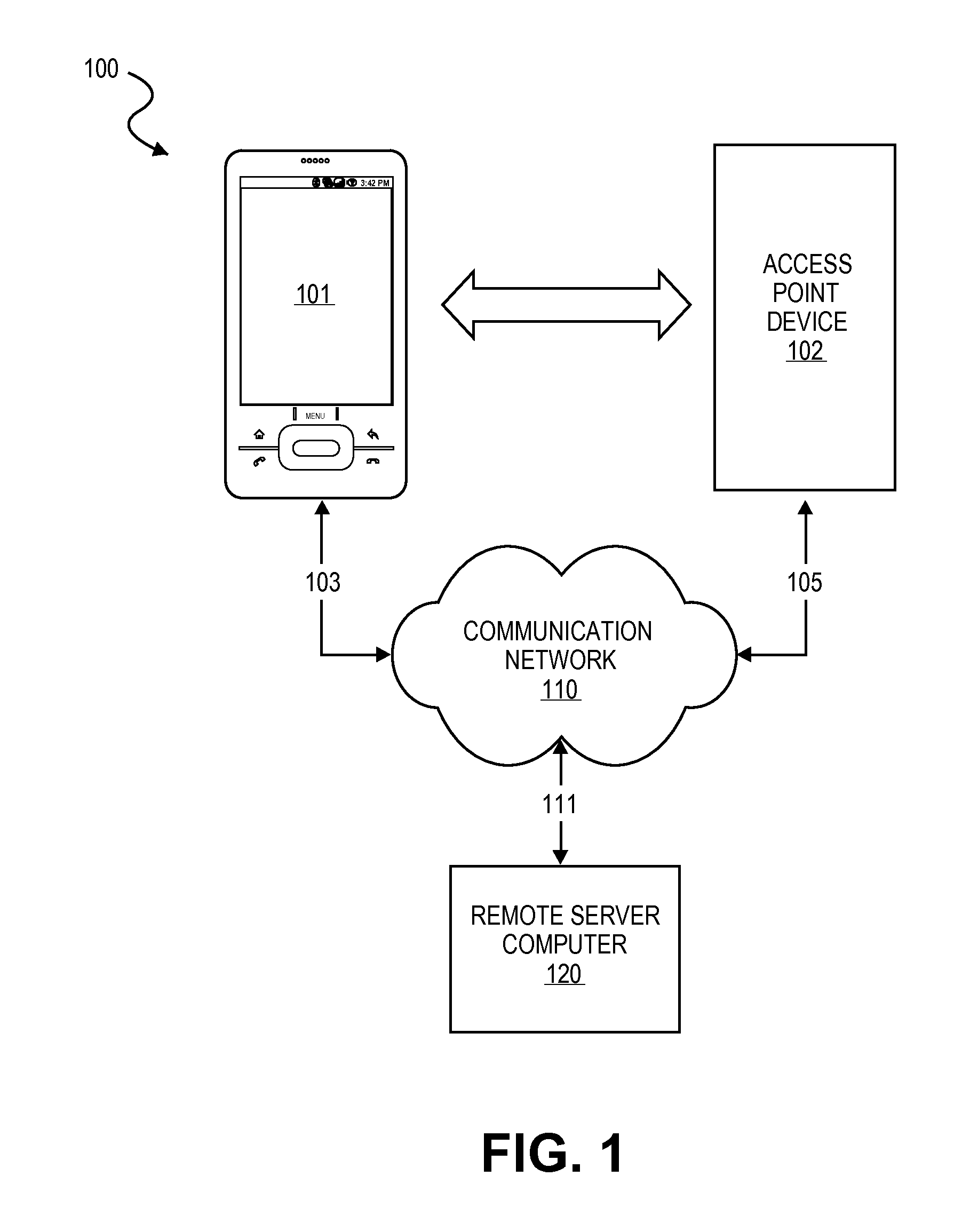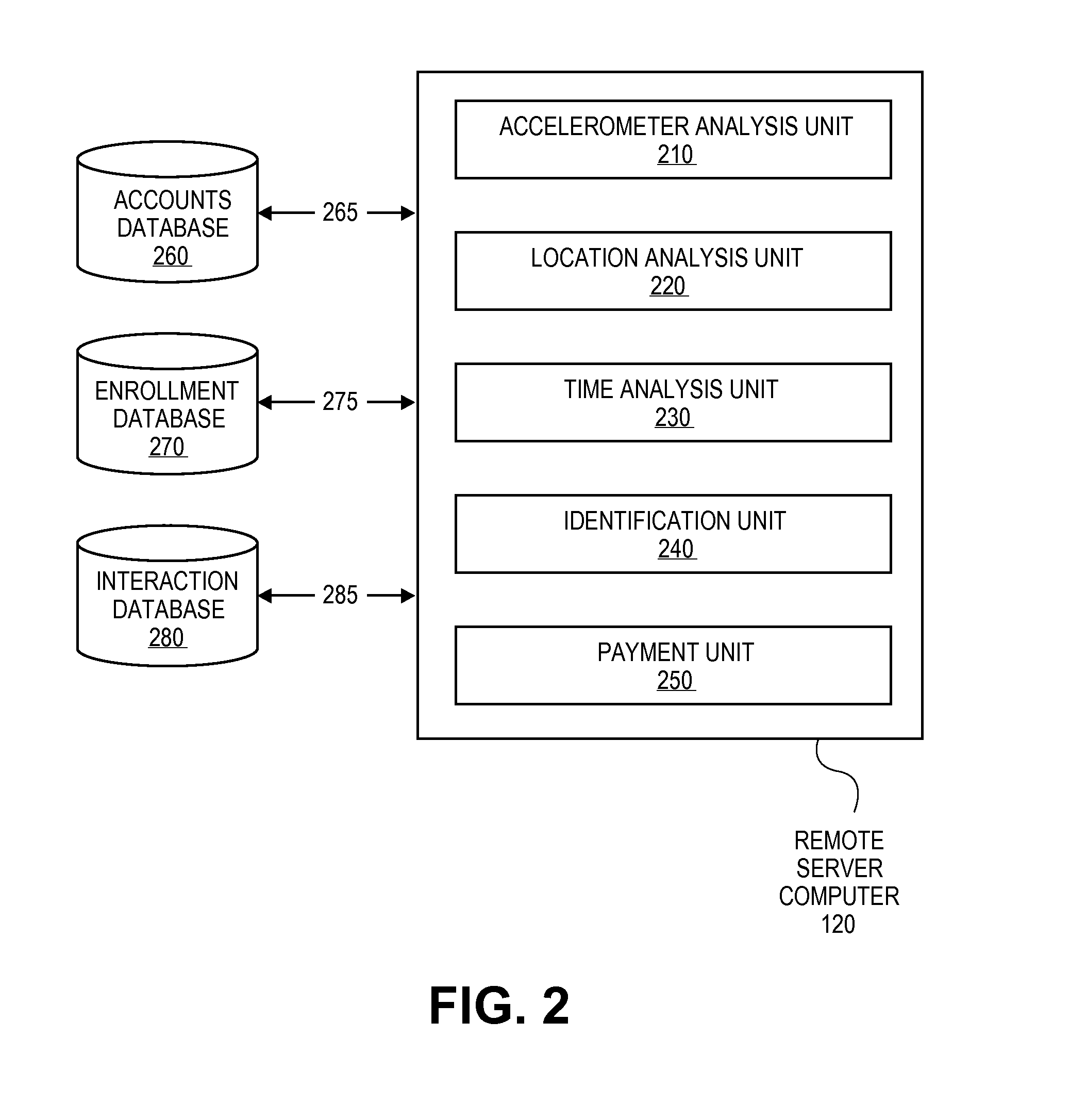Access Using a Mobile Device with an Accelerometer
a mobile device and accelerometer technology, applied in the field of access using a mobile device with an accelerometer, can solve the problems of inconvenient access, inconvenient use, and easy loss of credentials,
- Summary
- Abstract
- Description
- Claims
- Application Information
AI Technical Summary
Benefits of technology
Problems solved by technology
Method used
Image
Examples
Embodiment Construction
[0018]There are many situations in which a person is required to show credentials to gain access to a secure or restricted area or to prove that the person was at a particular location and a particular time. Similarly, a person or entity may wish to validate credentials before granting access to a secure or restricted area or confirm that an employee or agent was at a particular location at a particular time.
[0019]A secure or restricted area may be any location where access is limited and a pass, ticket, identification, credentials, or other admission device / card is required to gain access into the secure or restricted area. Access is usually granted through an access point device positioned at a secure or restricted area. For example, any sporting, cultural, or entertainment event may constitute a secure or restricted area. The present invention may also be used to permit access to and payment of fees associated with other venues, such as sports stadiums or arenas, theatres, music ...
PUM
 Login to View More
Login to View More Abstract
Description
Claims
Application Information
 Login to View More
Login to View More - R&D
- Intellectual Property
- Life Sciences
- Materials
- Tech Scout
- Unparalleled Data Quality
- Higher Quality Content
- 60% Fewer Hallucinations
Browse by: Latest US Patents, China's latest patents, Technical Efficacy Thesaurus, Application Domain, Technology Topic, Popular Technical Reports.
© 2025 PatSnap. All rights reserved.Legal|Privacy policy|Modern Slavery Act Transparency Statement|Sitemap|About US| Contact US: help@patsnap.com



